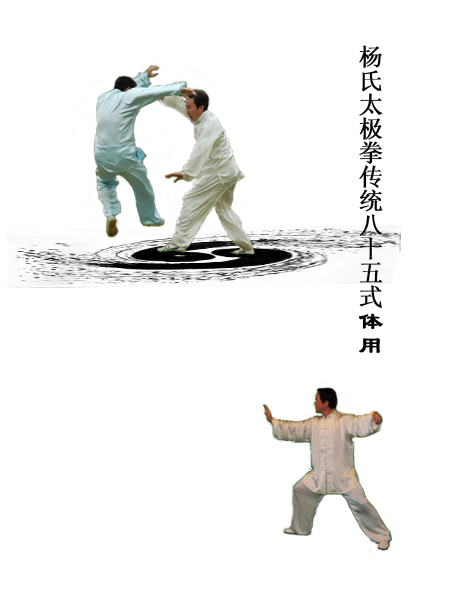
当前课程知识点:University Physics - Electricity and Magnetism > Chapter I Electric Fields > Lecture 5 Evaluation of Electric Field (II) > Lecture 5 Evaluation of Electric Field (II)
返回《University Physics - Electricity and Magnetism》慕课在线视频课程列表
返回《University Physics - Electricity and Magnetism》慕课在线视频列表
我们继续讨论如何计算电荷连续分布的带电体的电场。大家有什么想法吗? 上一讲我们已经会计算点电荷以及点电荷系的电场。
那么如何将电荷连续分布带电体与点电荷相联系?大家还记得我们之前讨论的?
在讨论质量连续分布模型的时候,我们把物体分割为无限多个质量元, 每一个质量元为dm, dm可以看成是一个质点。
同样,我们可以把连续带电体分割为无限多个电荷元, 每一个电荷元带电量为dq,dq可看成是一个点电荷。
利用点电荷的电场,我们可以计算每一个电荷元在 P点产生的场强, 然后应用叠加原理将所有电荷元产生的场强相加,得到总场强。
电荷元dq 在P点处的场强的dE可以用这个方程来表示。其中,r表示电荷元dq到场点P的距离,单位矢量r由电荷元指向场点P。
然后对整个带电体进行积分得到总场强E. 但要注意,此式为矢量积分,一定要注意每一个电荷元产生的电场方向。
类比于物体的质量分布,三种不同类型的电荷分布对应不同类型的电荷密度。
我们用ρ, σ 和 λ分别表示体电荷密度,面电荷密度和线电荷密度。电荷元dq可以由这三个式子来表示。
现在我们举几个例子来讨论如何计算电荷连续分布带电体的电场。
我们来看第一个例子, 计算均匀带电细棒的电场。棒的长度为l. 线电荷密度为λ,总带电量为+Q.
请计算P点处的场强, P点位于x轴,距离细棒的一端为a.
我们可以把这根棒分为无限多个电荷元,每一个电荷元的长度为dx. 由于细棒带正电,即每一个电荷元dq都是正的,那么在P点处,每一个电荷元dq产生的电场dE都沿x负向。
因此,我们积分的时候就不需要考虑矢量的问题。正如我们之前讨论的,电荷元的电量dq应该等于线电荷密度λ乘以dx.
我们注意到, ke 和 λ 都是常数,可以提到积分号外面. 经过积分,我们得到总场强E。
从这个表达式可以看出,如果P点距离细棒非常远,换句话说,a 远远大于l, 分母中的l可以忽略不计,则场强E 的公式简化为该式,此式正好表示的是点电荷Q产生的电场。
这是合理的,因为如果P点很远,细棒的几何尺寸可以忽略,完全可以看成是一个点电荷。
我们看下一个例子。这是一个均匀带电圆环,半径为R ,线电荷密度为λ. 请计算P点处的场强。P点位于圆环中心轴,距离中心为x.
如图所示,位于圆环顶端的电荷元dq在P点处的场强dE可以分解为两个分量dEx和dE垂直。
dEx 平行于 x 轴,dE⊥ 垂直于x 轴. 我们先来看关于中心对称的两个电荷元产生的电场分布。
由于对称性,这两个电荷元产生的电场,垂直分量正好抵消。
而对于整个圆环,每一对这样的电荷元产生的电场都有这样的对称性。所以总场强的垂直分量为零。
我们只需要将平行分量相加即可。现在,我们根据这个表达式,探讨几个特殊位置的场强。
在圆环中心,x=0, 所以场强为零。
当x远远大于圆环半径,即场点P距离圆环很远,此时圆环的电荷分布可以忽略。
在种情形下,圆环可以看成是一个点电荷。因此,场强的表达式变为此式,正好为点电荷的电场。
好,我们再多讲一个例子。这是一个均匀带电圆盘。半径为R,面电荷密度为σ. 请计算P点处的场强。P点位于圆盘中轴线上,距离圆盘中心为x.
这个问题的关键在于确定电荷元dq. 上一个例子,我们已经得到了均匀带电圆环的场强。
因此,我们可以将圆盘分割成一系列的半径为r宽度为dr的同心圆环,每一个圆环的面积等于2πrdr.
我们先计算带电圆环的电场dE, 然后通过积分得到总场强。由于对称性,P点的场强沿x方向。
利用上一个例子得到的Ex表达式,我们用圆环的半径r替代R, dq替代大Q,于是,我们得到电荷元dq产生的电场dEx.
对整个圆盘进行积分,下限为0,上限为R,得到P点处的总场强.
当场点离圆盘很远,也就是x远远大于R, 则圆盘可以看成一个点电荷。场强的表达式变为点电荷Q产生的场强表达式。
如果x远远小于R,此时我们可以计算得到距离圆盘很近的点的场强。在此情况下,此式变为近场的近似表达。
那么,如果圆盘的半径趋于无限大,情况又会怎样?当圆盘的半径趋于无穷大, 场强简化为这个表达式。
我们发现,这个表达式与x远小于R时的情形一样。
我们可以理解,当圆盘变为无限大平面,周围每一点都是近场,结果与测量位置无关。即无限大带电平面产生的电场为匀强电场。
上面的例子讨论了如何计算电荷连续分布带电体的电场强度。
关键是根据电荷分布类型,确定电荷元dq的表达形式。总场强就等于所有dq产生的场强矢量和。
好的,下节课见。
-Lecture 1 Electric Charges
-Lecture 1 Electric Charges--作业
-Lecture 2 Coulomb’s Law
-Lecture 2 Coulomb’s Law--作业
-Lecture 3 Electric Fields
-Lecture 3 Electric Fields--作业
-Lecture 4 Evaluation of Electric Fields(I)
--Lecture 4 Evaluation of Electric Fields(I)
-Lecture 4 Evaluation of Electric Fields(I)--作业
-Lecture 5 Evaluation of Electric Field (II)
--Lecture 5 Evaluation of Electric Field (II)
-Lecture 5 Evaluation of Electric Field (II)--作业
-Lecture 6 Electric Field Lines
--Lecture 6 Electric Field Lines
-Lecture 6 Electric Field Lines--作业
-Lecture 7 Electric Flux
-Lecture 7 Electric Flux--作业
-Lecture 8 Gauss’s Law
-Lecture 8 Gauss’s Law--作业
-Lecture 9 Application of Gauss’s Law
--Lecture 9 Application of Gauss’s Law
-Lecture 9 Application of Gauss’s Law--作业
-Lecture 10 Electric Potential
--Lecture 10 Electric Potential
-Lecture 10 Electric Potential--作业
-Lecture 11 Evaluation of Electric Potential
--Lecture 11 Evaluation of Electric Potential
-Lecture 11 Evaluation of Electric Potential--作业
-Lecture 12 Finding E from V
-Lecture 12 Finding E from V--作业
-Lecture 13 Properties of a conductor in electrostatic equilibrium (I)
--Lecture 13 Properties of a conductor in electrostatic equilibrium
-Lecture 13 Properties of a conductor in electrostatic equilibrium (I)--作业
-Lecture 14 Properties of a conductor in electrostatic equilibrium (II)
--Lecture 14 Properties of a conductor in electrostatic equilibrium (II)
-Lecture 14 Properties of a conductor in electrostatic equilibrium (II)--作业
-Lecture 15 Dielectrics
-Lecture 15 Dielectrics--作业
-Lecture 16 Capacitor & Capacitance
--Lecture 16 Capacitor & Capacitance
-Lecture 16 Capacitor & Capacitance--作业
-Lecture 17 Capacitors with dielectrics
--Lecture 17 Capacitors with dielectrics
-Lecture 17 Capacitors with dielectrics--作业
-Lecture 18 Energy stored in a capacitor
--Lecture 18 Energy stored in a capacitor
-Lecture 18 Energy stored in a capacitor--作业
-Lecture 19 Magnetism
-Lecture 20 Current & Current Density
--Lecture 20 Current & Current Density
-Lecture 20 Current & Current Density--作业
-Lecture 21 Steady current & Electromotive force
--Lecture 21 Steady current & Electromotive force
-Lecture 22 Magnetic Fields
-Lecture 22 Magnetic Fields--作业
-Lecture 23 Charged Particle in a Magnetic Field
--Lecture 23 Charged Particle in a Magnetic Field
-Lecture 23 Charged Particle in a Magnetic Field--作业
-Lecture 24 Magnetic Force on a Current—Carrying Conductor
--Lecture 24 Magnetic Force on a Current—Carrying Conductor
-Lecture 24 Magnetic Force on a Current—Carrying Conductor--作业
-Lecture 25 Sources of a Magnetic Field
--Lecture 25 Sources of a Magnetic Field
-Lecture 25 Sources of a Magnetic Field--作业
-Lecture 26 Calculation of a magnetic field by applying the Biot-Savart Law
--Lecture 26 Calculation of a magnetic field by applying the Biot-Savart Law
-Lecture 26 Calculation of a magnetic field by applying the Biot-Savart Law--作业
-Lecture 27 Ampere’s Law
-Lecture 27 Ampere’s Law--作业
-Lecture 28 Application of Ampere’s Law
--Lecture 28 Application of Ampere’s Law
-Lecture 28 Application of Ampere’s Law--作业
-Lecture 29 Gauss’s Law in Magnetism
--Lecture 29 Gauss’s Law in Magnetism
-Lecture 29 Gauss’s Law in Magnetism--作业
-Lecture 30 Origin of the magnetic effect of materials
--Lecture 30 Origin of the magnetic effect of materials
-Lecture 30 Origin of the magnetic effect of materials--作业
-Lecture 31 Magnetization
-Lecture 31 Magnetization--作业
-Lecture 32 Magnetic Materials
--Lecture 32 Magnetic Materials
-Lecture 32 Magnetic Materials--作业
-Lecture 33 Faraday’s Law
-Lecture 33 Faraday’s Law--作业
-Lecture 34 Motional EMF
-Lecture 34 Motional EMF--作业
-Lecture 35 Induced Electric Field
--Lecture 35 Induced Electric Field
-Lecture 35 Induced Electric Field--作业
-Lecture 36 Generators
-Lecture 36 Generators--作业
-Lecture 37 Inductance
-Lecture 37 Inductance--作业
-Lecture 38 Energy in a Magnetic Field
--Lecture 38 Energy in a Magnetic Field
-Lecture 38 Energy in a Magnetic Field--作业
-Lecture 39 Maxwell’s Equations
--Lecture 39 Maxwell’s Equations
-Lecture 39 Maxwell’s Equations--作业


